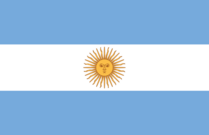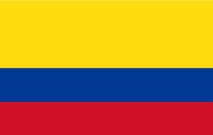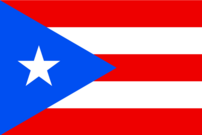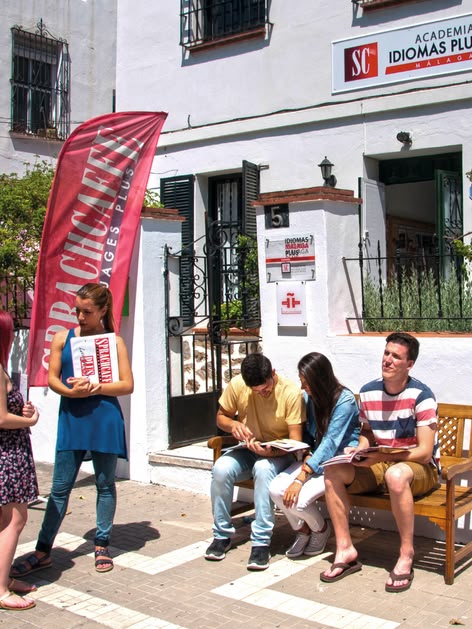Latin American colloquial language
The Latin American colloquial language is an extremely rich and diverse linguistic phenomenon that has developed over centuries of history, cultural influences and social evolution in the vast Latin American continent. Although Spanish is the dominant language in most Latin American countries, regional variations and dialectal nuances in colloquial usage make Latin American Spanish a fascinating kaleidoscope of expressions, accents and idiomatic turns of phrase that reflect the rich variety of cultures and traditions of the region.
Introduction
A distinctive feature of the colloquial language in Latin America is the influence of the indigenous languages that coexist with Spanish. During the time of colonization, indigenous languages such as Quechua, Nahuatl and Guarani left a significant imprint on the lexicon and grammar of the Spanish spoken in their respective regions. As a result, many words and expressions in Latin American Spanish have indigenous roots, which adds a special nuance to the language.
In addition to indigenous influences, Latin American Spanish has been shaped by African and European heritage. The presence of African populations is particularly noticeable in countries such as Cuba, the Dominican Republic and Brazil, and this is reflected in the lexicon and ways of speaking in those regions. On the other hand, the influence of different groups of European colonizers, such as the Spanish, Portuguese and French, has left its mark on the pronunciation, grammar and vocabulary of different areas of Latin America.
Colloquial examples by country
The colloquial language varies significantly from one country to another in Latin America. Below, we will give you specific examples of linguistic features in some Latin American countries:
Mexico:
- "Chido" or "padre" are used to say that something is cool or awesome.
- "Chamba" is a word that means work.
- "Güey" (or "wey") is a colloquial expression used informally among friends and is equivalent to "amigo" or "tío".
- "Echar la hueva": Means to procrastinate or be lazy.
- "Cuate": A word used to refer to a friend or companion.
- "No manches": Expression of surprise or disbelief, similar to "I can't believe it."

Argentina:
- The Rioplatense accent is characterized by the pronunciation of "ll" and "y" as "sh," e.g., "llave" is pronounced "shave."
- They use the word "laburar" instead of "trabajar" to refer to work.
- The expression "che" is used to get someone's attention or to address someone informally, similar to "oye" in other countries.
- "Boludo": A word that can be used in a friendly or derogatory way to refer to someone.
- "Pibe": Used to refer to a young man or boy.

Colombia:
- They use the expression "parce" or "parcero" to refer to a friend or companion.
- In much of the country, they use the word "chévere" to say that something is nice or pleasant.
- The expression "¡qué pena!" is used to apologize or show empathy, often in uncomfortable situations.
- "Bacano": means something that is good, chévere or cool.
- "Rumbear": To party or have fun at a party.
- "Estar enguayabado": To have a hangover.

Peru:
- The word "jato" is used to refer to a house or dwelling.
- "Pata" is an expression used to refer to a friend.
- The Peruvian accent is known for its clear and distinct pronunciation of words.
- "Jamear": Means to eat or dine.
- "Patalear": Expression that means to protest or complain.
- "Choche": A way of saying "friend" or "companion."

Chile:
- The Chilean accent is characterized by a particular rhythm in speech, often called "castellano cantado."
- They use the word "pololo" to refer to a partner or boyfriend.
- "Cachai" is an expression meaning "do you understand?" and is used similarly to "do you know?" in other regions.
- "Pantufla": used to refer to a person who is submissive or dominated by his or her partner.
- "Andar a la rápida": Means to hurry or do something quickly.
- "Flaite": Refers to a person of lower class or marginal behavior.

Puerto Rico:
- Puerto Rican Spanish has African and Caribbean influences, which is reflected in words like "guagua" to refer to a bus.
- They use "bregar" instead of "trabajar."
- The expression "¡ay bendito!" is used to express sympathy, surprise or empathy in various situations.
- "Chavos" or "pesos": Terms used to refer to money.
- "Janguear": Going out to hang out or have fun with friends.
- "Chévere de bomba": Means something that is very cool or great.

Cuba:
- The Cuban accent often omits the "s" at the end of words, as "tú sabes" becomes "tú sabe."
- They use the word "chama" to refer to a girl or young woman.
- The expression "¡qué bola!" is a way of asking "how are you?" or "what's new?"
- "Yuma": term to refer to a foreign person, especially from the United States.
- "Jama": Food or food.
- "Tener la pata caliente": To be nervous or anxious.

Venezuela
- "Chamo": Young man or friend. It is a common word to address someone informally.
- "Pana": Friend or companion. It is used to refer to someone close.
- "Arrecho": Can mean anger or frustration, but is also used to refer to something surprising or impressive.
- "Marico": Can be offensive if used inappropriately. Also used in a friendly way among friends to refer to them.

Important aspects of the Latin American colloquial language
Latin American literature and cinema have played an important role in the dissemination and preservation of colloquial language in the region. Authors such as Gabriel García Márquez, Julio Cortázar and Mario Vargas Llosa have captured the linguistic richness of their respective countries in their works, while Latin American cinema has exported expressions and idioms internationally, contributing to the dissemination of Latin American language and culture worldwide.
Globalization and the influence of pop culture have led to the adoption of Anglicisms in colloquial language. In addition, the creation of neologisms and the adaptation of foreign words are often common in the evolution of colloquial language in Latin America. Latin American colloquial language is also constantly evolving, influenced by factors such as globalization, technology and the media. The incorporation of Anglicisms, youth slang terms and street language is common throughout the region, adding layers of complexity and creativity to spoken Spanish.
In addition to this, each country has its own idiomatic expressions and idioms that can be disconcerting to speakers from other regions. These expressions are often an integral part of everyday communication and reflect the cultural identity of the region. In some regions, Spanish coexists with indigenous languages, and this has led to the creation of linguistic hybrids known as "indigenous Spanish" or "Andean Spanish." These dialects incorporate words and grammatical structures from the local indigenous languages.
Then join us on a language trip to Barcelona, Malaga or Havana - we guarantee your language improvement and the fun is already included!
Same words with different meanings
Now, it is important that you know the meaning of the word you want to use, depending on the country you are in, or the person you want to talk to, because depending on the region, a word can have one or more meanings. Here are some examples, so you won't be embarrassed with other Spanish speakers:
"Mamado":
In Mexico and some other countries: It means that someone is strong or muscular.
In Argentina: It can refer to someone who is tired or exhausted.
"Chamba":
In Venezuela: Means work or employment.
In Peru: Refers to a party or social gathering.
"Arrecho":
In Colombia: To be sexually excited.
In Venezuela: To be angry or upset.
"Torta":
In some Latin American countries: Means a kind of cake or sponge cake.
In Mexico: Refers to a sandwich or snack filled with ingredients such as ham and cheese.
"Chaqueta":
In Colombia: Garment to cover yourself from the cold.
In Mexico: To masturbate.
"Mono":
In several Latin American countries: An ape, an animal.
In Colombia: A blond person.
"Coger":
In most Spanish-speaking countries: It means "to take" or "to grab".
In some countries, such as Argentina and Uruguay: It is a vulgar word used to refer to having sex.
"Plátano":
In most Spanish-speaking countries: Refers to a variety of banana or plantain, depending on the location.
In some South American countries, such as Ecuador: May refer to a specific type of plantain that is larger and less sweet than the banana.
These are just a few examples of Spanish words that may have different meanings or specific connotations depending on the country in which they are spoken. The linguistic diversity in the Spanish-speaking world is fascinating and enriches the richness of the language.
Conclusion
In short, the Latin American colloquial language is a vibrant and diverse manifestation of Spanish that reflects the history, cultural diversity and creativity of the region. It is an ever-evolving linguistic treasure trove that enriches communication and expression in Latin America and beyond. Don't let the amount of Spanish words overwhelm you and lose your motivation to learn the language, rather take it as a fun option to enrich your vocabulary and don't be embarrassed to speak! In the end we all make mistakes when learning a new language, and it is with practice that you improve your level.
Discover all options to learn Spanish abroad









